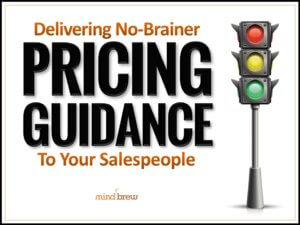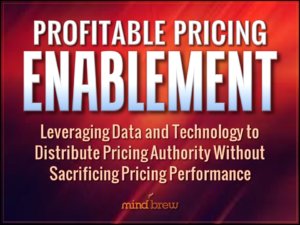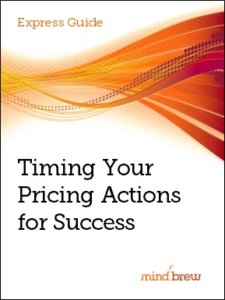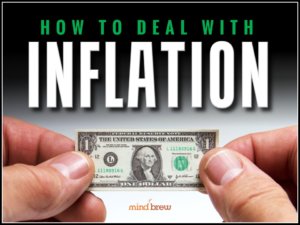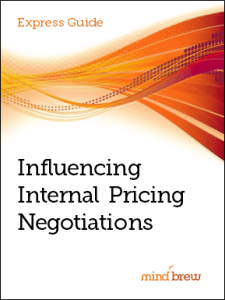When things go right in pricing, no one seems to notice. But when things go wrong, everyone is quick to blame the pricing team.
That dynamic sometimes puts undue stress on pricing practitioners. You might feel like you have to be nearly perfect almost all of the time or else your job could be in jeopardy.
If you find yourself in this situation. Take a deep breath, and remember this simple math trick:
If you want to be 95% effective, you only have to be 65% effective — and do it three times.
You’ve probably seen this math trick before. But in case you haven’t — or in case you need a reminder — here’s how it works.
If your goal is to get good prices 95% of the time (and in our opinion, that’s a pretty good goal), it’s not as hard as you might think. The easiest way is to set up a three-tier filtering system:
- Sales education — The first tier of your filtering system isn’t really a filter at all. Instead, you’re going to provide some education (or re-education) to the sales team about why pricing is important. Yes, you’ll probably have to keep providing this education on a regular basis because they might forget. Your objective should be to get the sales team to get pricing right about 65% of the time. When you were in school, getting a 65% would have been about a D-, and that seems pretty achievable for even the worst sales teams. So for 100 sales, 35 won’t have good prices after this small intervention. 100 deals – 65 improved by education = 35 bad prices
- Sales team alerts — For those 35% of deals that are still going badly from a pricing perspective, you are going to set up some alerts. This can take several different forms depending on what technology your team uses, but basically, you want some kind of notice that tells the salesperson, “Hey, this is a bad deal. Are you really, really, sure you want to do this?” Again, your goal should be a D-; get the sales team to fix their own mistakes 65% of the time. Because 65% of 35 is 22, that means the sales team will be fixing pricing at stage two about 23 times out of 100, leaving 12 deals to get through. 100 deals – 65 improved by education – 22 improved by sales alerts = 12 bad prices
- Pricing team alerts — For that last 12% of deals, set up a filter that requires the pricing team to approve bad prices that made it through the other two filters. Again, strive for 65% effectiveness. If pricing can fix 65% of those 12 deals out of 100, that means you’re fixing 7 or 8 deals out of 100, leaving just 4 or 5 with bad prices, which brings you to 95% effectiveness. 100 deals – 65 improved by education – 22 improved by sales alerts – 7 fixed by the pricing team = 5 bad prices
Of course, if you can do better than a D- at any one of these stages, you’ll be even better than 95% effective!
You can apply this same technique to all sorts of different processes. For example, if you are communicating something to another team, you might only be 65% effective at communicating the first time. But if you can make your point in two other ways and achieve 65% effectiveness each time, suddenly your results are amazing!
If you’re ready to get started setting up a three-tier system for your organization, check out the webinars on Delivering No-Brainer Pricing Guidance To Sales and Profitable Pricing Enablement.
And if you have any ideas for a three-tier system that will get kids to clean their rooms 95% effectively, we would be glad to hear them.

